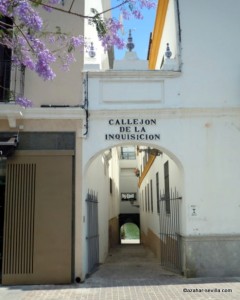The Palacio de Las Dueñas is the Seville home of the Dukes of Alba, and until her recent death, of Cayetana, the 18th Duchess of Alba. Last year the house was opened to the public, and recenly I took a rather delayed opportunity to see it for myself.
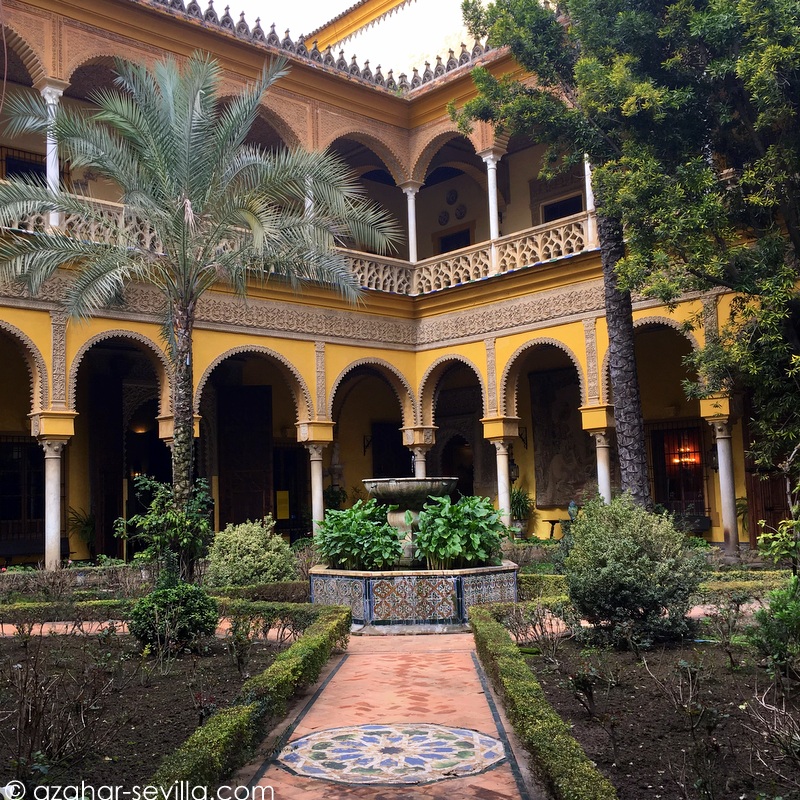
The palace was originally built in the 15th century by the Pineda family, one of the original aristocratic houses of Seville, and was named for the adjacent Monastery of Las Dueñas (finally demolished in 1868). In 1496 the house was sold to Doña Catalina de Ribera, widow of Governor Don Pedro Enriquez, according to legend in order to pay for the ransom of Don Juan de Pineda, taken prisoner by the Moors during the wars against Granada. In 1612 it passed by marriage to the family of the Dukes of Alba, where it has remained ever since. In the 19th century parts of the palace were converted for a time into a boarding house, and Antonio Machado, probably Seville’s most famous poet, was born here in 1875.
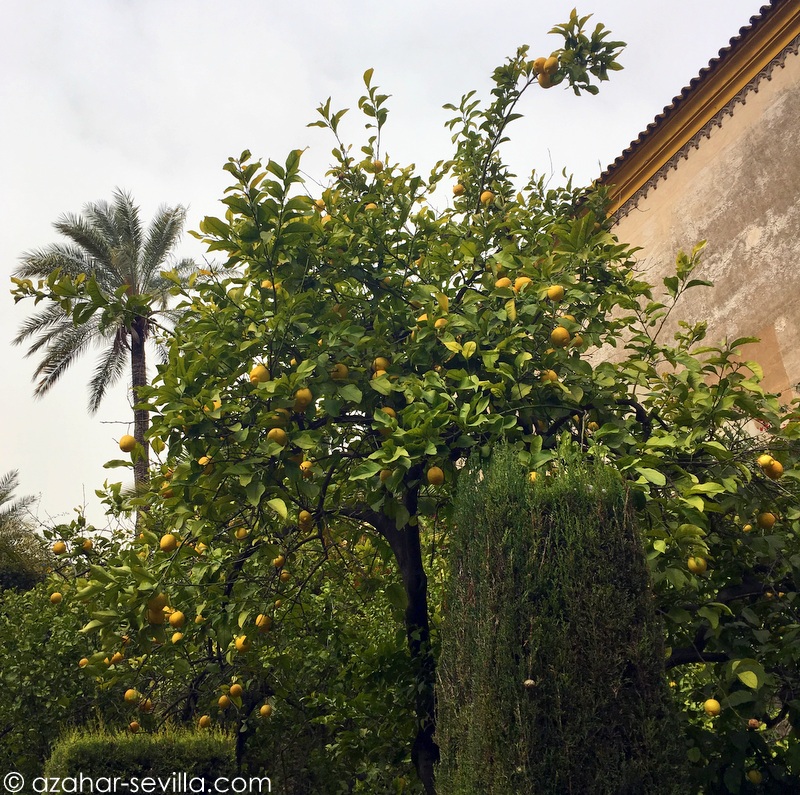
From the outside, despite a substantial entry gate with a glimpse of garden beyond, it’s only moderately impressive, and it’s full extent really only becomes apparent once you pass inside. The main palace is essentially Renaissance, and built around three sides of the central courtyard (the fourth side giving onto the gardens), with additional wings and courtyards, and surrounded by gardens and outbuildings. Despite being near the city centre it’s an oasis of peace, calm and greenery, and it’s easy to appreciate why the family loved the place so much.

The tour begins in the front garden courtyard, where our handy audio guide explains some of the history of the Palace. Ahead of us is the apeadero, a typical feature of all grand houses, where visitors would have alighted from their carriages, but our route takes us off to the right to the stables, and through to the famous garden of the lemon trees immortalised by Machado. From there we come to the central courtyard, the heart of the old palace. This is built on two floors in the Gothic-Mudejar style with the typical columns, arches and decorative plasterwork of the period. In one corner the principle staircase, adorned with tapestries and with an outstanding ornate coffered wood ceiling, leads up to the private residence of the Dukes of Alba (not open to the public).
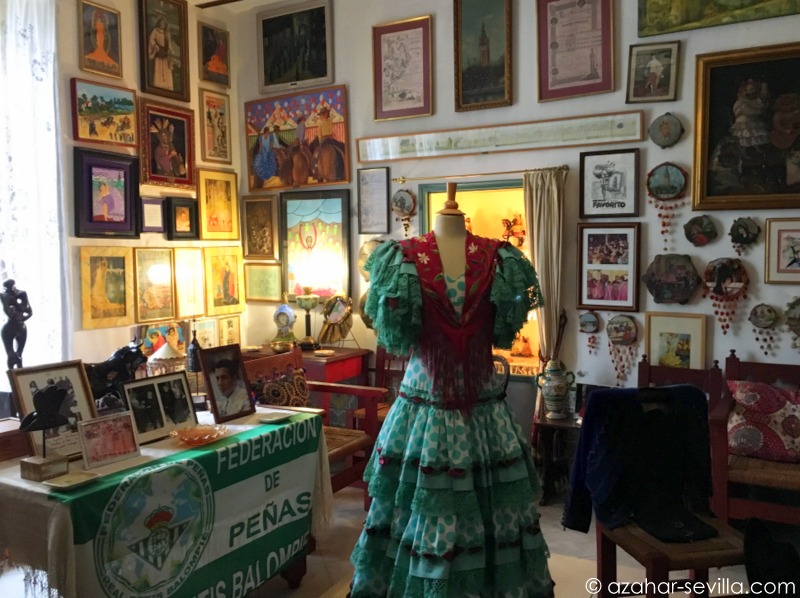
Arranged around the courtyard on the ground floor are a number of rooms that traditionally formed the public part of a late mediaeval palace. These include the chapel and is antechamber, where the extended family and their friends would gather for religious occasions, the Flamenco room, complete with a tablao for dancing, and of course, a library. All these rooms also serve to house an important collection of art and furniture collected over the centuries.
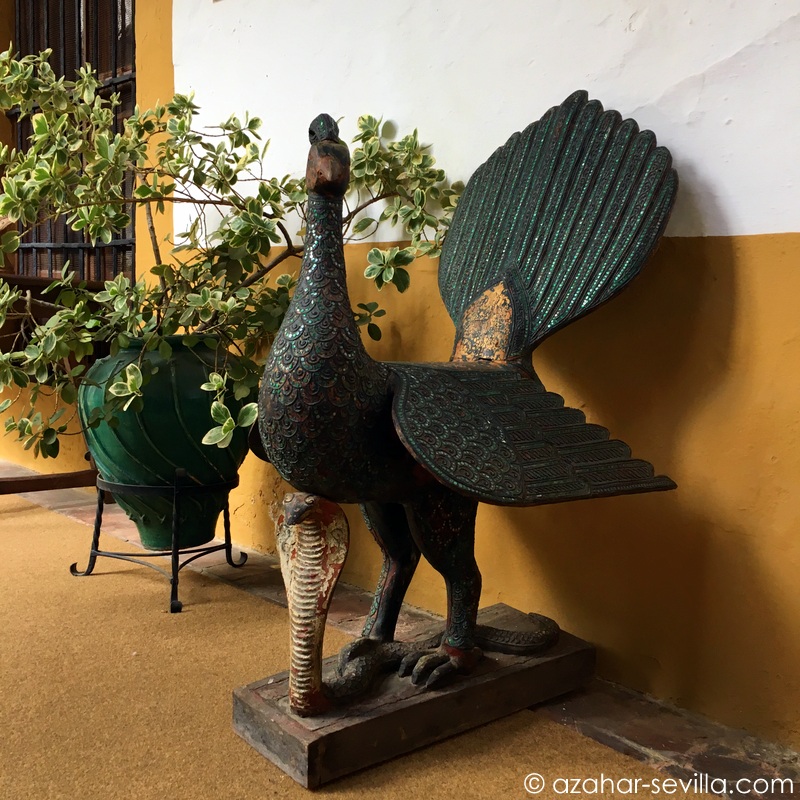
Tucked away beyond these are the Olive Oil Patio (so named because it was once used for storing olive oil), and the quiet space of the Santa Justa garden, which has a picturesque creeper clad balcony overlooking one corner, one of my favourite places in the palace.
The Palacio de las Dueñas is almost like a bridge between times present, and times past (at least if you were wealthy), and offers one of those rare glimpses into another style of life. It’s well worth a visit.
Calle Dueñas 5
Sevilla
Tel: +34 954 214 828
Palacio de las Dueñas Website
